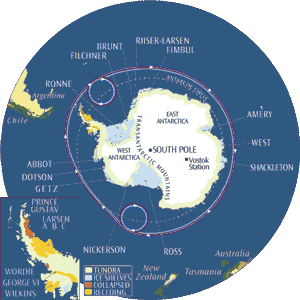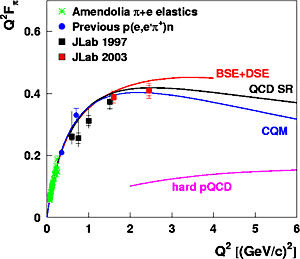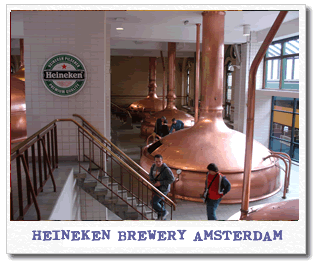Oil reserves refer to portions of
oil in place that are claimed to be recoverable under economic constraints.
Oil in the ground is not a "reserve" unless it is claimed to be economically recoverable, since as the oil is extracted, the cost of recovery increases incrementally as the amount of oil remaining is reduced. The recovery factor (RF) is the percentage of oil in place which is expected to be economically recoverable under a given set of conditions.
Oil reserve estimates are ideally a measure of geological and economic
risk — of the
probability of oil existing and being producible under current economic conditions using current technology. The international authority for reserves definitions is generally the
Society of Petroleum Engineers. The
U.S. Securities and Exchange Commission demands that oil companies with exchange listed stock adopt reserves accounting standards that are consistent with common industry practice. However these standards are based on historical production practices and are not always meaningful in dealing with deep-water and non-conventional oil fields that are becoming the source of more and more of the world's oil production. In addition, many of the world's largest oil-producing countries do not follow normal industry standards in estimating their oil reserves and do not publish any data which would allow their estimates to be verified.
Proven, probable and possible reserves are the three most common categories of reserves used in the oil industry. They represent the probability that a reserve exists based on the geologic and engineering data and interpretation for a given location.
Proven Reserves - defined as oil and gas "Reasonably Certain" to be producible using current technology at current prices, with current commercial terms and government consent, also known in the industry as 1P. Some industry specialists refer to this as P90, i.e., ideally having a 90% certainty of being produced. Proven reserves are further subdivided into "Proven Developed" (PD) and "Proven Undeveloped" (PUD). PD reserves are reserves that can be produced with existing wells and perforations, or from additional reservoirs where minimal additional investment (operating expense) is required. PUD reserves require additional capital investment (drilling new wells, installing gas compression, etc.) to bring the oil and gas to the surface.
Probable Reserves - defined as oil and gas "Reasonably Probable" of being produced using current or likely technology at current prices, with current commercial terms and government consent. Some Industry specialists refer to this as P50, i.e., ideally having a 50% certainty of being produced. This is also known in the industry as 2P or Proven plus probable.
Possible Reserves - i.e., "having a chance of being developed under favourable circumstances". Some Industry specialists refer to this as P10, i.e., ideally having a 10% certainty of being produced in the foreseeable future. This is also known in the industry as 3P or Proven plus probable plus possible.
Proven reserves in order With one-fourth of the world's proven oil reserves and some of its lowest production costs,
Saudi Arabia produces over 4 gigabarrels of oil per year and is likely to remain the world's largest oil exporter for the foreseeable future. According to the U.S. Energy Information Agency, Saudi oil production declined about 8% during 2006 to 8.75 million barrels per day in December.
[4] Saudi Arabia Alberta's estimated oil reserves was raised from around 5 gigabarrels (billion barrels) to the much larger figure of around 180 gigabarrels by the inclusion of the
Athabasca Oil Sands deposit by the
Alberta Energy and Utilities Board (AEUB),
Canada Iran has the world's second largest reserves of conventional crude oil at 133 gigabarrels, according to the
CIA World Factbook, although it should be noted that both
Canada and
Venezuela have larger reserves if
Non-conventional oil is included. Iran is the second largest oil holder globally with approximately 10% of the world's oil.
Iran averages about 1.5 gigabarrels per year, which is a significant decline from the 6 gigabarrels per year it produced when the
Shah of Iran was in power. The United States prohibits imports of oil from Iran, which limits its exposure to an Iranian oil cutoff, but does not reduce the likelihood that an interruption of Iranian oil would cause a spike in world oil prices. American pressure on Iran to renounce
Iran's nuclear program makes the possibility of military confrontation quite high, and the political risks of Iranian oil far outweigh any geological ones.
 Iran Iraq
Iran Iraq has the third largest reserves of conventional oil in the world at 112 gigabarrels. Despite its vast oil reserves and low costs, production has not recovered since the US-led
2003 invasion of Iraq. Constant
looting,
insurgent attacks, and
sabotage in the oil fields has limited production to around 0.5 gigabarrels per year at best. Political risk is thus the main constraint on Iraqi oil production and likely to remain so in the near future.
Iraq The
United Arab Emirates and
Kuwait are nearly tied for the fourth largest conventional oil reserves in the world at 98 and 97 gigabarrels, respectively. Both countries produce approximately 0.8 gigabarrels per year, leaving around 100 years of reserves in each.
Abu Dhabi has 94 percent of the UAE's oil reserves while most of Kuwait's oil reserves are in the
Burgan Field, the world's second largest oil field after Saudi Arabia's Ghawar. Kuwait hopes to step up oil production to reach capacity of 4 million bbl/d by 2020, but since Burgan was found in 1938 and is getting very mature, this will be a challenge. Furthermore, according to data leaked from the
Kuwait Oil Company (KOC), Kuwait's remaining proven and non-proven oil reserves are only about half the official figure - 48 gigabarrels.
 United Arab Emirates and Kuwait
United Arab Emirates and Kuwait According to the Oil and Gas Journal (OGJ),
Venezuela has 77.2 billion barrels of proven conventional oil reserves, the largest of any country in the Western Hemisphere. In addition it has non-conventional oil deposits similar in size to Canada's - at 1,200 billion barrels approximately equal to the world's reserves of conventional oil. About 267 billion barrels of this may be producible at current prices using current technology.
[5] Venezuela's
Orinoco tar sands are less viscous than Canada's
Athabasca oil sands – meaning they can be produced by more conventional means, but are buried deeper – meaning they cannot be extracted by surface mining. In an attempt to have these
extra heavy oil reserves recognized by the international community, Venezuela has moved to add them to its conventional reserves to give nearly 350 billion barrels of total oil reserves. This would give it the largest oil reserves in the world, even ahead of Saudi Arabia.
Venezuela's development of its non-conventional oil reserves is mainly limited by political unrest. In late 2002 and early 2003 a strike at the state oil company
PDVSA resulted in a dramatic drop in Venezuelan oil production and the firing of most of the oil company's workers. This has significantly limited its ability to develop and produce oil.
[6] Estimates of Venezuelan oil production vary. Venezuela claims its oil production is over 3 million barrels per day, but oil industry analysts and the U.S. Energy Information Administration believe it to be much lower. In addition to other reporting irregularities, much of its production is extra-heavy oil, which may or may not be included with conventional oil in the various production estimates. The U.S. Energy Information Agency estimated Venezuela's oil production in December 2006 was only 2.5 million barrels per day, a 24% decline from its peak of 3.3 million in 1997.
[7] Notwithstanding that, Venezuela continues to be the second or third largest supplier of oil to the United States, sending about 1.5 million barrels per day to the U.S. Venezuela is also a major oil refiner and the owner of the
Citgo gasoline chain.
Venezuela United States proven oil reserves declined to a little more than 21 gigabarrels by the end of 2004 according to the
Energy Information Administration, a 46% decline from the 39 gigabarrels it had in 1970 when the huge
Alaska North Slope ('ANS') reserves were booked. Since there have been millions of oil wells drilled in the US and there is nowhere left for an elephant the size of ANS to remain hidden, it appears that US oil reserves are on a permanent downward slide. As oil fields get closer to the end of production, estimates of what is left become more accurate. Consequently, US oil reserve numbers are very accurate compared to those of other countries.
United States
crude oil production peaked in late 1970 at over 4 gigabarrels per year, but declined to 1.8 gigabarrels per year by early 2006. In fact, production in the fall of 2005 fell to only 1.5 gigabarrels per year as a result of
hurricanes in the
Gulf of Mexico — a level not seen since shortly after
World War II. At the same time, US consumption of
petroleum products increased to over 7.3 gigabarrels per year. The difference was mostly made up by imports, with the largest supplier being Canada, which increased its exports of crude oil and refined products to the US to 0.8 gigabarrels per year at the end of 2005. Imports of oil and products now account for nearly half of the US trade deficit. In early 2007, the Energy Information Agency (EIA) of the U.S. Department of Energy projected that in 2007 oil consumption would rise to 20.9 million barrels per day, while oil production would fall to 5.1 million barrels per day, meaning that oil consumption would be nearly four times as high as oil production.
The United States has the largest known concentration of
oil shale in the world, according to the
Bureau of Land Management and holds an estimated 800 gigabarrels of recoverable oil, enough to meet U.S. demand for oil at current levels for 110 years. Unfortunately, oil shale is much more difficult and expensive to extract and refine than conventional oil and oil sands. Oil shale must be produced by mining rather than drilling, and the shale contains a waxy oil precursor known as
kerogen rather than liquid petroleum. Despite that, oil shale could be developed given high enough oil prices, and the technology for converting oil shale to oil has been known since the Middle Ages, although the scale of the mining and processing operations would be vastly greater than anything done in history.
The main constraint on oil shale development is probably going to be that Canadian and Venezuelan oil sands are only about half as expensive to produce, and the US has full access to Canadian oil sands production under the
North American Free Trade Agreement (NAFTA). In addition, there are environmental concerns about oil shale development. The oil shale areas are
semi-arid, in which mine scars last for centuries, and are at the headwaters of several important rivers, notably the
Powder River in a region in which
water rights are very important. These rivers are the source of irrigation water for vast areas of farmland and are the source of drinking water for many major cities. As a result, the oil shales are probably not going to be developed until global oil shortages become very severe.
In December, 2006, the
Bureau of Land Management of the US Department of the Interior issued research, development, and demonstration (RD&D) leases for five
oil shale projects in Colorado's Piceance basin.
United States While the government of
Mexico claims it has over 100 gigabarrels of oil, as of January, 2006, the prestigious Oil and Gas Journal estimated its proven reserves at only 12.9 gigabarrels. The reason for the discrepancy is that, while the oil may exist in theory, in practice, politics prevents it from being developed. The
constitution of Mexico gives the state oil company,
PEMEX, a monopoly over oil production, and the Mexican government treats Pemex as a major source of revenue, taking 60% of its revenues in taxes, according to Business Week on
13 December 2004. As a result, Pemex has insufficient capital to develop the resources on its own, and cannot take on foreign partners to supply money and technology it lacks.
Since 1979, Mexico has produced most of its oil from the supergiant
Cantarell Field, which is the second-biggest field in the world by production. In 1997, PEMEX started a massive
nitrogen injection project to maintain oil flow, which now consumes half the
nitrogen produced in the world. Unfortunately, non-miscible injection schemes such as nitrogen injection simply increase production rates rather than increasing the amount of oil that can be recovered, and result in the same amount of oil being produced over a shorter period of time. As a result of nitrogen injection, production at Cantarell rose from 1.1 million barrels/day in 1996 to a peak of 2.1 million barrels per day in 2004. However, during 2006 Cantarell's output fell 25% from 2.0 million barrels/day in January to 1.5 million barrels/day in December, and the decline continued at a higher than expected rate in 2007.
As for its other fields, 40% of Mexico's remaining reserves are in the
Chicontepec Field, which was found in 1926, but which has remained undeveloped because the oil is trapped in impermeable rock. The remainder of Mexico's fields are much smaller, much more expensive to develop, and contain
heavy oil that trade at a significant discount to light-oil which is cheaper to refine. As a result of concentrating on its one good oil field and ignoring everything else, Mexico's proven reserves have fallen every year for more than a decade, and it has less than 10 years worth of oil reserves at current production levels. As a result of the decline in the Cantarell field, during 2006 Mexico's total petroleum production dropped 12% from 3.4 million barrels/day in January to 3.0 million barrels/day in December.
In 2002 PEMEX began developing an oil field called "Proyecto
Ku-Maloob-Zaap", located 105 kilometers from
Ciudad del Carmen. It is estimated that by 2011 the field will produce nearly 800,000 barrels/day
[8]. However, this level of production will be achieved by using a nitrogen injection scheme similar to that of Cantarell, and production at Ku-Maloob-Zaap is expected to decline after 2011.
In June, 2007 former U.S. Federal Reserve Chairman Alan Greenspan warned that declining oil production in Mexico could cause a major fiscal crisis there, and that Mexico needed to increase investment in its energy sector to prevent it.
[9] Mexico See also: Oil exploration Arctic basins tend to be richer in natural gas than in oil. The abundance of gas in the Arctic so far from main markets will require moving gas long distances. Problems of ensuring that oil and gas keep flowing freely in arctic subsea
pipelines are virtually identical to those experienced at a depth of 8,000 feet in the
Gulf of Mexico, where temperatures are at or close to the
freezing point (at that pressure) along the
seafloor where hydrates can form.
Technology for moving oil from the seafloor to the shore is similar to that employed in
Norway, and may someday have application in Alaska.
Some large oil companies believe
Arctic waters, including those of northern
Alaska, hold great potential as an oil and
natural gas frontier. Most of these basins are unexplored and undeveloped. The
social,
environmental, and
economic aspects of development will be challenging.
Extensive drilling in the Canadian Arctic by such companies as
Petro Canada and
Dome Petroleum discovered significant oil reserves, but unfortunately not enough to justify an oil pipeline to southern Canada or the United States. All the oil wells which were drilled have since been abandoned. Currently, the Arctic ice pack makes the shipping season too short to justify shipping oil out by tanker, but it is possible future global warming could melt the Arctic ice pack and make tanker shipment feasible. In 2007 the Canadian Navy announced its intention to build eight new Arctic patrol vessels to assert sovereignty over its Arctic waters in anticipation of such an eventuality.
Arctic reserves There are varying estimates of how much oil is left in
Middle Eastern reserves. Several oil companies and the
U.S. Department of Energy state that the Middle East has two-thirds of
all the world's oil reserves. Other oil experts, however, argue that the Middle East has two-thirds of only
all proven oil reserves, and that the percentage of all oil reserves it has could be much lower than two-thirds
[10]. The
U.S. Geological Survey says that the Middle East has only between half and a third of the recoverable oil reserves in the world.
Middle Eastern reserves The
OPEC countries decided in 1985 to link their production quotas to their reserves. What then seemed wise provoked important increases of the estimates; in order to increase their production rights. This also permits the ability to obtain bigger loans at lesser interest rates. This is a suspected reason for the reserves rise of
Iraq in 1983, then at war with
Iran.
In fact, Dr.
Ali Samsam Bakhtiari, a former senior executive of the
National Iranian Oil Company, has stated unequivocally that OPEC's oil reserves (notably Iran's) are grossly overstated. In a recent interview
[11] he stated that world oil production is now at its peak and predicted that it will fall 32% by 2020.
The total declared reserves are 701 billion barrels, from which 317.54 are suspicious (the year 2004 was added later).
The table suggests that, firstly, the OPEC countries declare that the discovery of new fields, year after year, replaces exactly or near exactly the quantities produced, because the declared reserves do not vary a lot from one year to the other. For example, Saudi Arabia extracts 3 billion barrels a year, which will diminish by this amount. However, Abu Dhabi, in the
United Arab Emirates, declares exactly 92.3 billion barrels since
1988, but in 16 years, 14 billion barrels were extracted.
Also, there is much competition between states. For example, Kuwait gave to themselves 90 billion barrels of reserves in 1985, the year of the reserves link. Abu Dhabi and Iran responded with slightly higher numbers, to guarantee similar production quotas.
Saddam Hussein, fearing to be left behind by nations he disliked, replied with around 100. Apparently, with all this amount of inflation, Saudi Arabia was forced to reply, two years later, with its own revision.
Other examples suggest the inaccuracy of official reserve estimates:
Note however that the definition of proven reserves varies from country to country. In the USA, the conservative rule is to classify as proven only the reserves that are being produced. On the other hand,
Saudi Arabia classifies as proven reserves known fields not yet in production.
Venezuela includes non-conventional oil (bitumens) of the Orinoco in its reserve base.
January 2006, the magazine
Petroleum Intelligence Weekly declared that reserves of Kuwait were in fact only 48 billion barrels, of which only 24 billion were "completely proven", backing this statement on "leaks" of official confidential Kuwaiti documents. The value is half of the official estimate.
[12] Shell company announced
9 January 2004 that 20% of its reserves had to pass from proven to possible (uncertain). This announcement led to a loss in the value of the stock; a lawsuit challenged that the value of the company was fraudulently overvalued. Shell later revised its reserves estimates three times, reducing them by 10,133 million barrels (against 14,500 million). Shell's president, Phil Watts, resigned.
As can be seen on the table the reserves declared by
Kuwait before and after the
Gulf War 1990-1991 are the same, 94 billion barrels, despite the fact that immense
oil-well fires ignited by the Iraqi forces had burned off approximately 6 billion barrels.
In 1970,
Algeria increased its "proven reserves" estimate (until then 7-8 billion barrels) to 30 billion. Two years later, the estimate was increased to 45 billion. After 1974, the country's estimate was less than 10 billion barrels (as reported by Jean Laherrère).
Pemex (state company of
Mexico) in September 2002 decreased its reserve estimate by 53%, from 26.8 to 12.6 billion barrels. Later the estimate was increased to 15.7 billion.
Other examples exist of reserves being underestimated. In 1993, the reserves of
Equatorial Guinea were limited to some insignificant fields; the
Oil And Gas Journal estimated them at 12 million barrels. Two giant fields and several smaller ones were discovered, but the numbers announced stayed unchanged until
2003. In
2002, the country still had 12 million barrels of reserves according to the journal, while it was producing 85 million barrels in the same year. The reserves of
Angola were at 5.421 billion barrels, (four significant numbers, it gives the impression of great precision) from 1994 to 2003, despite the discovery of 38 new fields of more than 100 million barrels each.
Suspicious official estimates of oil reserves from OPEC countries The US
EIA (Energy Information Administration) reduced their forecast for Saudi oil production to 15.4 mb/day in 2020 and Middle East OPEC countries increasing to 35.2 mb/day by 2020 from 20.7 mb/day in 2002 [Internation Energy Outlook 2005 table E1
[13]. These estimates were further reduced in the 2006 Annual Energy Outlook, in which Middle East OPEC production was projected to be 29.4/27.0/18.5 mb/day in 2020 assuming $34/$51/$85 oil prices respectively
[14].
2020 Vision Many countries maintain government-controlled oil reserves for both economic and national security reasons. Although there are
global strategic petroleum reserves, the following highlights the strategic reserves of the top three oil consumers.
The United States maintains a
Strategic Petroleum Reserve at four sites in the
Gulf of Mexico, with a total capacity of 0.727 gigabarrels of crude oil. The sites are enormous salt caverns that have been converted to store crude oil. The US SPR has never been filled to capacity; the largest amount reached thus far was 0.7 gigabarrels on
August 17,
2005, whereafter reserves were drawn down to meet demand in the aftermath of
Hurricane Katrina. This reserve was created in 1975 following the 1973-1974 oil embargo, and as of 2005 it is the largest emergency petroleum supply in the world. At current US consumption rates (over 7 gigabarrels per year), the SPR would supply all normal US demand for approximately 37 days.
In
2004 China's National Development and Reform Commission (NDRC) began development on a
101.9 million barrel strategic reserve. These reserves are particularly important for Japan since they have practically no domestic petroleum production and import 99.7% of their oil.
 Rajya Sabha
Rajya Sabha
 The Fen Line (sometimes Fenline without the space) runs from
The Fen Line (sometimes Fenline without the space) runs from 
 Organisation
Organisation Notable alumni
Notable alumni History
History


 Electronvolts and energy
Electronvolts and energy

 .
. = 197.326 960 2(77) eV nm Electronvolts and temperature
= 197.326 960 2(77) eV nm Electronvolts and temperature



 Iran
Iran United Arab Emirates and Kuwait
United Arab Emirates and Kuwait Portfolio of beer brands
Portfolio of beer brands